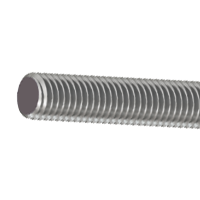Tamper proofing access systems
Technology is advancing year on year.
In a range of industries, if the method behind work is deemed to be slow, cumbersome or something that requires a niche skillset, you can almost guarantee that there is something being worked on – this very second – in regards to improving or automating the process.
Contactless technology is something that falls under this bracket. In years gone by, there would have been a security officer guarding an entrance throughout the day or night granting access to the premises through the close inspection of credentials, identification, but more often than not in the modern-day, there is now a device on the wall requiring only a personal radio-frequency identification card – often shortened to RFID – to provide access.
Despite the fact that is may certainly seem like this technology sprung up out of nowhere for some; contactless technology has been slowly integrated into modern-day living since the 1990s. Today, you would find it hard to pinpoint a person that is unaware of its existence – with the vast majority of people using this technology to pay for their shopping on a day to day basis.
Progression will bring issues, and the major issue with contactless technology is those looking to exploit it for their own, often illegal, benefit. Thieves have been able to easily devise methods of manipulating this technology through its widespread use, allowing them to gain unauthorised access or even collect your data and personal information.
Typical methods include the criminal tampering with the reader itself to intercept signals – allowing the perpetrator to use the signals to clone cards that emit the same signal – therefore tricking the system into providing access and allowing the criminal to gain access into potential high-security areas.
Improving the security of contactless systems and belongings
Thieves will continually seek to exploit vulnerabilities in contactless systems – but it is relatively easy to prevent these systems from being targeted. Access systems are becoming increasingly sophisticated, but all of them can be vulnerable if a fraudster can gain physical access to a device.
Tamper proofing of the device can be achieved through the fitting of a tamper-proof housing, which includes a recessed mount before this is fixed with special tamper-proof screws. Generally, these systems are supplied within the housing, but improving the quality or level of security of your tamper-proof fixings should be a major consideration for those wanting to protect their livelihoods.
And although the risk of someone tampering with an RFID card in a pocket or wallet, like a contactless bank card, is relatively low, research by Which? back in 2019 suggests that wrapping contactless cards in tin foil or keeping them in a foil-lined wallet will help protect against data theft – which certainly provides food for thought.
High security tamper-proof screws
Specialist screws designed specifically to protect against tampering from vandals and thieves are available, such as 2-Hole Screws, Pin Hex Screws, Clutch Head Screws and Tricone® Screws. These options are all screw types that feature unique drive heads which require a special driver to insert and remove.
Whilst a number of tamper-proof screws may be suitable for the job required, the
Tricone® Security Bolt provides a superior solution.
The Tricone® is Fastenright’s own patented, premium security screw that is suitable for a number of high torque applications and is one of the most secure fasteners on the market. Each Tricone® is uniquely coded and fully traceable to the customer.
The bolt hosts three equally spaced blind holes, formed into the head, hosting a cone projection that is shaped and protrudes upwards from the base of the hole – making forced removal of the fastener difficult.
Available in a range of sizes. Please contact us with your requirements to further your enquiry.




